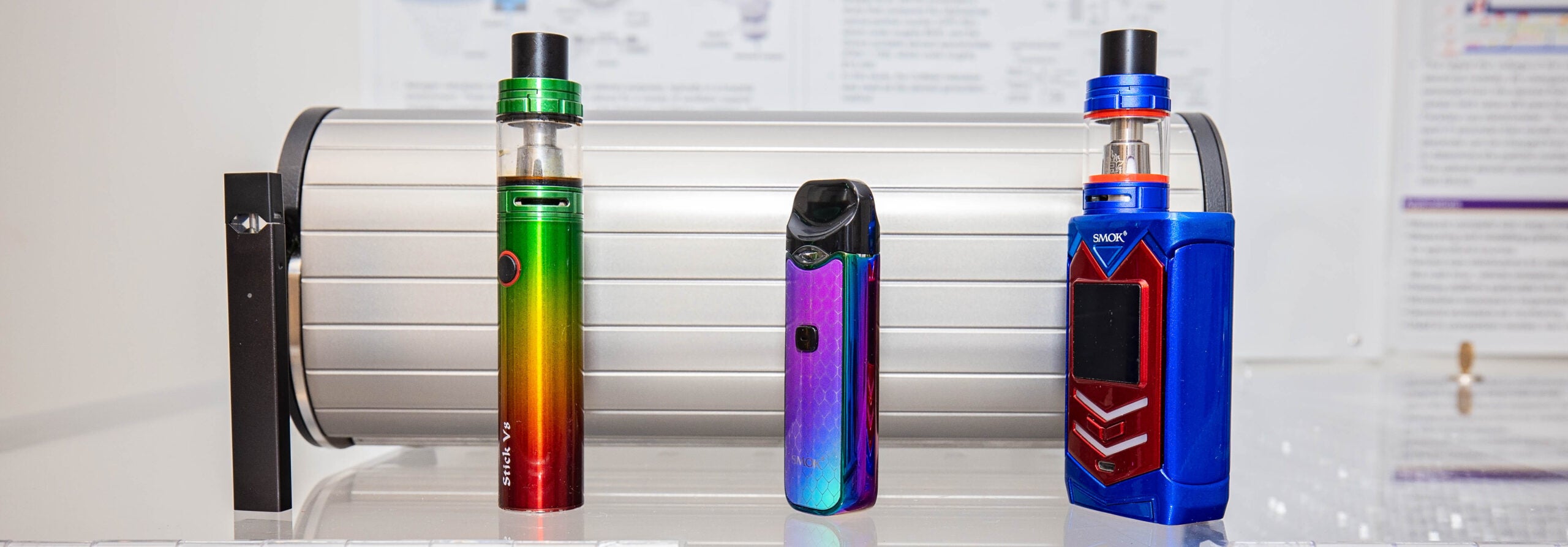Soule: Huge amount of student involvement in published research
Research by HHP’s Dr. Eric Soule and others at East Carolina University on e-cigarette use in vehicles led to published articles in Tobacco Control and Drug and Alcohol Dependence.
The full article, “Secondhand electronic cigarette aerosol in vehicles impacts indoor air quality,” is available here. An introduction and short report on “Electronic cigarette use and cigarette smoking in vehicles among adults who use electronic cigarettes and cigarettes in the USA” can be accessed here.
Soule, an associate professor in the Department of Health Education and Promotion, has been working with Dr. Sinan Sousan, an assistant professor in Brody’s Department of Public Health, and Dr. Jack Pender, a principal research scholar with ECU Department of Chemistry. A team of students also has been involved, and Soule said the project would not have been possible without student contributions.
Those students are Neal Patel, Alisha Thomas, Emily Gold, Sarah Fresquez, Trey Mooring, Vivien Coombs, Anish Gogineni and Alex Tiet.

Dr. Eric Soule with the Department of Health Education and Promotion in the ECU College of Health and Human Performance.
“There was a huge amount of student involvement in this project,” Soule said. “As one of the main goals of the project was to provide students with hands-on research experience and training, we involved students in most aspects of the project. Students assisted with recruiting, screening and scheduling participants, and also conducted cognitive interviews with participants to develop a survey used in each study. For the field study, the students learned how to use air-quality monitoring equipment and software. They also ran study sessions in which participants sat in their own vehicles and used their own e-cigarettes following a study protocol. They also got to be involved in data analysis and were included in the writing process for presentations and the papers that were published as well So essentially, students were involved in the research from the beginning to the end of the process.”
Research showed almost all people who use e-cigarettes vape inside of their vehicle. More than nine out of every 10 participants in the study of more than 1,000 people who use e-cigarettes reported vaping in their vehicle at least some of the time, and most did so regularly.
“Additionally, many people who reported driving or riding in vehicles when other adults or children were present also reported e-cigarette use around those people, putting bystanders who do not use e-cigarettes at risk,” Soule said. “This relates to the significance of the field study that examined indoor air quality in vehicles when a single person vaped for about 30 minutes. We measure particulate matter in the air and sampled from the breathing area of the passenger seat. While the particulate matter levels varied greatly between the 60 participants in the study, levels increased by about 22 times the levels present before participants started vaping. Peak values we measured were similar to levels found in vaping conventions, where many people vape indoors, and particular matter concentrations measured in this study were generated from a single person using an e-cigarette in their vehicle.”
Soule concluded with a chief message.
“The main point is that people riding in vehicles with others who are using e-cigarettes are exposed to high concentrations of e-cigarette-generated chemicals, which may put them at risk for negative health effects,” Soule said.
